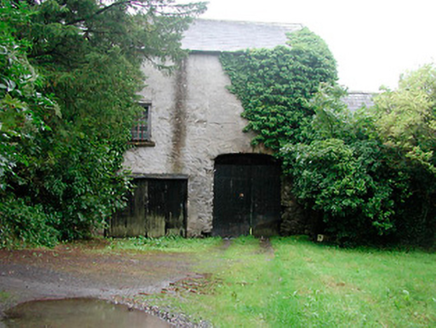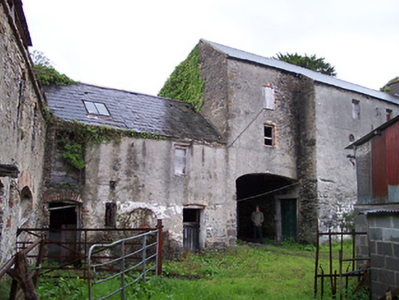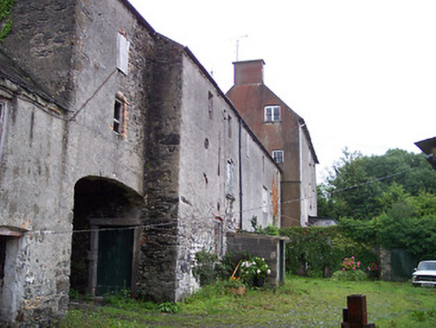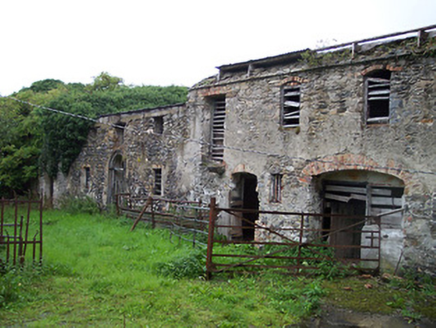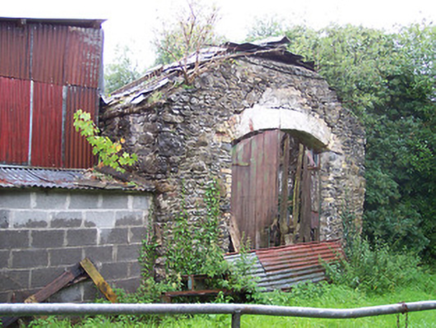Survey Data
Reg No
15317054
Rating
Regional
Categories of Special Interest
Architectural, Social
Original Use
Outbuilding
Date
1760 - 1770
Coordinates
218889, 238226
Date Recorded
19/08/2004
Date Updated
--/--/--
Description
Complex of single, two and three-storey outbuildings associated with Moat View (15317053), built c.1762, comprising a stable block, coach house, ancillary structures and a possible estate worker’s house. Arranged around a central cobbled courtyard to the southwest of the main house. Now out of use and in a semi derelict condition. Pitched natural slate and corrugated metal roofs. Roughcast rendered walls, now partially failing, over rubble stone construction. Square-headed window openings with remains of timber sash windows and timber louvers. Square and segmental-headed door openings with the remains of timber sheeted doors and half doors. Brick dressings to a number of the openings. Segmental-headed carriage arch to the north range gives access to courtyard. Three-bay two-storey structure with a central cut stone round-headed doorcase to the southeast side of the complex, possibly a former worker's house. Set back from road in extensive mature grounds, shared with Moate View House, to the east side of Moate.
Appraisal
Notable ensemble of outbuildings that play a key part to the overall importance of Moate View (15317053), built in 1762 for James Clibborn. This extensive complex reflects the importance of self sufficiency within the Quaker tradition in which it was built, with the complex of buildings comprising of a grain store, coach house, stables amongst other buildings. A fine cut stone doorcase to one of the buildings to the southeast side of this complex suggests that it may have been formerly an estate worker’s house. It is rare to find such a complete set of demesne farm buildings within a town setting and it helps provide and interesting historical insight into the extensive resources required to run and maintain a house of this size during the eighteenth and nineteenth century. These outbuildings retain their early form and fabric and survive in reasonable condition despite being out of use for a considerable period of time.
